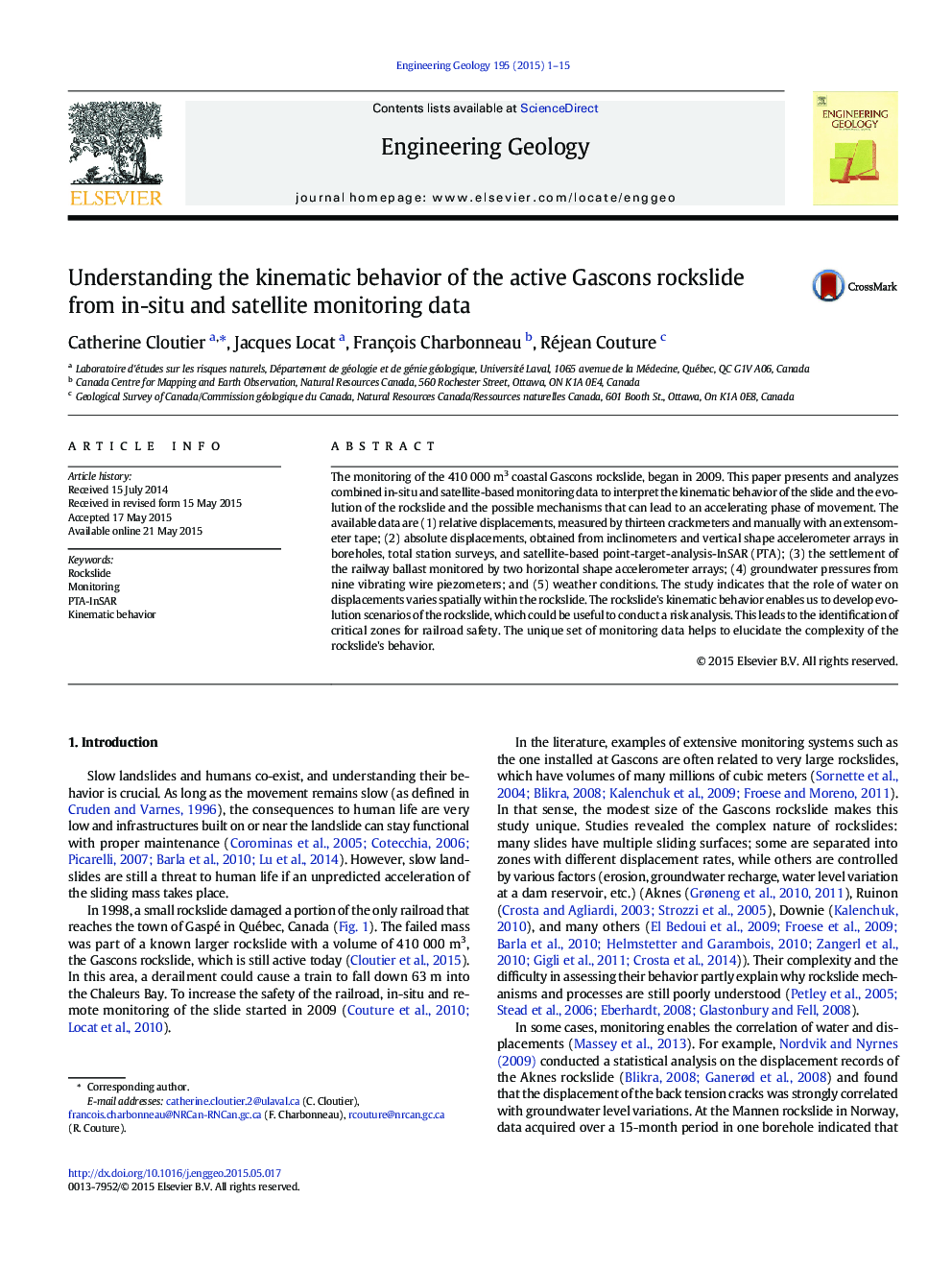| Article ID | Journal | Published Year | Pages | File Type |
|---|---|---|---|---|
| 4743278 | Engineering Geology | 2015 | 15 Pages |
•We monitored the displacements of the Gascons rockslide over a 3-year period.•A kinematic model was created based on many types of monitoring, including InSAR.•We identified critical zones for the railroad safety.•We developed evolution scenarios of the rockslide.•It provides a unique data set and shows the complex behavior of active rockslides.
The monitoring of the 410 000 m3 coastal Gascons rockslide, began in 2009. This paper presents and analyzes combined in-situ and satellite-based monitoring data to interpret the kinematic behavior of the slide and the evolution of the rockslide and the possible mechanisms that can lead to an accelerating phase of movement. The available data are (1) relative displacements, measured by thirteen crackmeters and manually with an extensometer tape; (2) absolute displacements, obtained from inclinometers and vertical shape accelerometer arrays in boreholes, total station surveys, and satellite-based point-target-analysis-InSAR (PTA); (3) the settlement of the railway ballast monitored by two horizontal shape accelerometer arrays; (4) groundwater pressures from nine vibrating wire piezometers; and (5) weather conditions. The study indicates that the role of water on displacements varies spatially within the rockslide. The rockslide's kinematic behavior enables us to develop evolution scenarios of the rockslide, which could be useful to conduct a risk analysis. This leads to the identification of critical zones for railroad safety. The unique set of monitoring data helps to elucidate the complexity of the rockslide's behavior.
